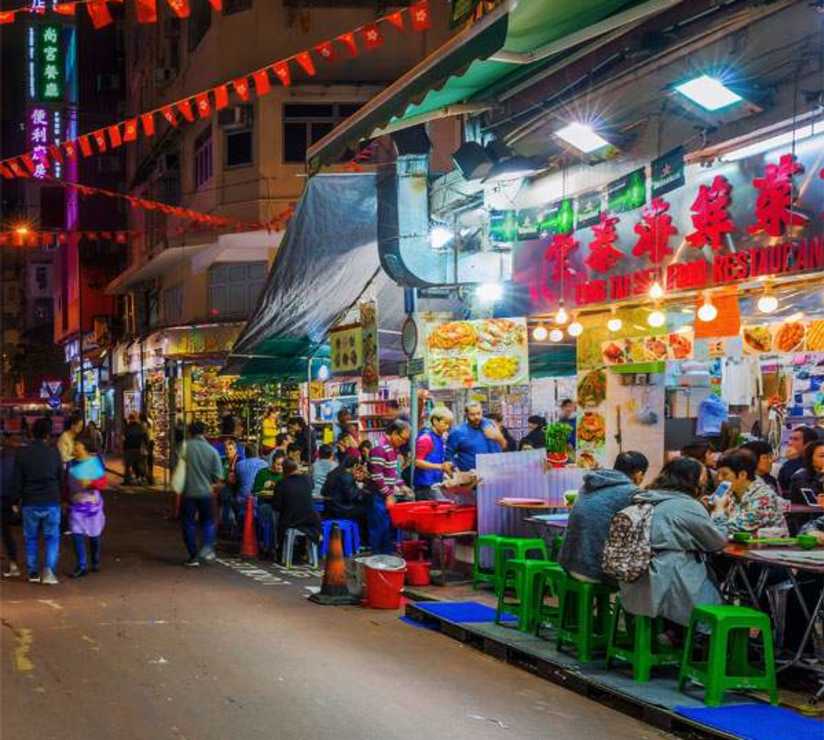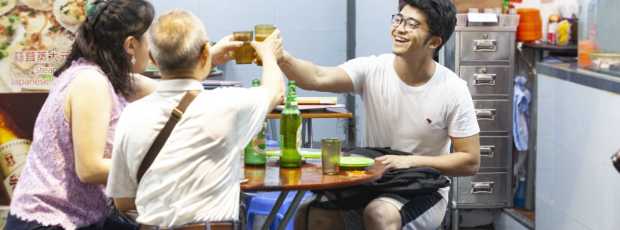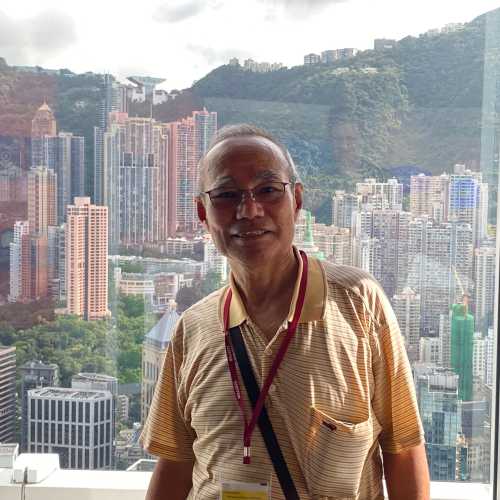Table Of Contents
- Getting Started: Hong Kong International Airport
- Hong Kong Island: Beyond Central's Skyscrapers
- Victoria Peak: Best Time to Visit
- Lantau Island: Day Trip Adventures
- Michelin Starred Restaurants and Street Food
- Hong Kong Nightlife Beyond Tourist Areas
- Traditional Temples and Modern Culture
- Understanding Local Life Through Streets
- Currency and Transportation Tips
- Is Hong Kong Worth Visiting Today?
- Making Hong Kong Trips Memorable
- Why These Trips Transform Travelers
Most people book Hong Kong vacations expecting a typical city break. What they get instead is something that rewires how they think about travel entirely. After six trips to this restless city, I've learned that Hong Kong doesn't just show you its attractions, it shows you how to see differently.
Getting Started: Hong Kong International Airport
Hong Kong International Airport earns its reputation as one of the world's best airports for good reason. The Airport Express train whisks you into Central in 24 minutes, but grab an Octopus card before you board. This becomes your city passport, working on every form of transportation.
Skip the taxi unless you're heading somewhere the train doesn't reach. The real insider move? Use the in-town check-in service at Airport Express Hong Kong or Kowloon stations on departure day, though it's only available for participating airlines.
Hong Kong Island: Beyond Central's Skyscrapers
Most visitors stick to Central's gleaming towers, but Hong Kong Island reveals its character in quieter spaces. Central matters, it's where you'll catch ferries and admire the density of skyscrapers packed into this peninsula. But head west into Sheung Wan to discover the best things about authentic local life.
Sheung Wan's Hidden Character
Sheung Wan blends traditional Chinese medicine shops with trendy cafes. Century-old herbalists sit next to specialty coffee roasters, creating a neighborhood that feels both ancient and cutting-edge. The streets here tell Hong Kong's story better than any museum.
Walking Between Neighborhoods
Walking from Central through Admiralty into Sheung Wan takes thirty minutes, but plan for two hours. Every side street offers something worth investigating, from tiny temples to family-run restaurants serving dishes unchanged for decades. This is the best way to explore Hong Kong's layered neighborhoods.
Looking for a private city experience in Hong Kong?
Explore the city with a local who plans a private day just for you; no groups, no scripts.
Victoria Peak: Best Time to Visit
Everyone visits Victoria Peak, and everyone should. But most people get it wrong by going at sunset when crowds pack the viewing platforms. The best way to experience the peak involves timing and strategy.
Avoiding the Crowds
Go at 3 PM when light creates depth between buildings, and you can see across to mainland China on clear days. The Hong Kong skyline looks impressive at any hour, but afternoon light reveals architectural details lost in evening's dramatic silhouettes. October through December offers the best time to visit.
Alternative Routes
Take the tram up, it's part of the experience, but walk down partway. Lugard Road offers multiple viewpoints without crushing crowds at Sky Terrace.
Lantau Island: Day Trip Adventures
Lantau Island deserves more than a rushed day trip to see the Big Buddha. This vast island holds fishing villages, monasteries, beaches, and hiking trails that most visitors never encounter. Adventure seekers can spend days here exploring different areas.
Tai O Fishing Village
Tai O on Lantau Island's western coast offers something intimate. This working fishing community features houses on stilts over water and elderly residents who remember when fishing was Hong Kong's main industry. Walking through feels like traveling back decades.
The Contrast Experience
The contrast hits when you realize you're still within Hong Kong's borders. One hour on the MTR takes you from Central's glass towers to a village where people dry fish on bamboo racks. This journey from east to west shows the vast differences that exist within this compact city.
Michelin Starred Restaurants and Street Food
Hong Kong earned its reputation as a food city through street stalls and neighborhood joints. The Michelin-starred restaurants here include some of the world's most affordable fine dining, where Chinese culinary tradition meets international standards.
Affordable Michelin Dining
Tim Ho Wan serves barbecue pork buns that justify the wait. But real food adventure happens in dai pai dongs and family-run places where menus exist only in Chinese. Here you'll savor authentic dishes born from generations of tradition.
Hidden Noodles Gems
In Sham Shui Po, I found a small noodle shop where the owner has been making the same six dishes for thirty years. Limited signage, just perfect wonton noodles served to locals who line up daily. The shop is called something unpronounceable, but regulars simply point and nod.
What if your day in Hong Kong was planned by someone who knows it — and you?
City Unscripted matches you with a local host who creates a private experience based on your interests, not a set route.
Hong Kong Nightlife Beyond Tourist Areas
Lan Kwai Fong gets attention, but Hong Kong's best nightlife experiences happen where locals go. Hidden speakeasies serve quality cocktails, while places like Behind Bars or PDT-style spots offer creative drinks in intimate settings. The nightlife scene in Hong Kong operates on multiple levels, from rooftop bars to underground clubs.
Arts and Music Scene
The arts scene operates on multiple levels. Traditional Chinese opera shares the city with experimental electronic music. Small venues like The Wanch in Wan Chai host jazz trios and indie shows with cheaper drinks than famous tourist spots.
Night Markets and Energy
Night markets stay open late, offering street food to knockoff goods under blazing neon. The energy is contagious, with vendors calling out in multiple languages while crowds flow between stalls.
Traditional Temples and Modern Culture
Hong Kong's temples exist as islands of calm in the frenetic city. Man Mo Temple fills with incense smoke so thick you can barely see the intricate carvings.
Contemporary Arts Integration
These sacred spaces share the city with cutting-edge galleries and street art, transforming industrial neighborhoods. Museums and galleries along Queen's Road or Nathan Avenue showcase contemporary work, while the contrast creates conversations about tradition and modernity.
Cultural Heritage Preservation
Contemporary artists work with the city's density rather than against it, creating installations commenting on urban life while respecting cultural heritage.
Understanding Local Life Through Streets
Mong Kok's markets teach you more about hong kong life than guidebooks. The flower market, bird market, and goldfish market cater primarily to locals.
Daily Rhythms
Elderly men gather in parks for Chinese chess while construction workers grab lunches from cart vendors. These rhythms continue regardless of tourist seasons.
Navigating Like Locals
The best way to understand the city involves watching how locals move through their daily routines. Follow crowds during rush hour, and observe how people navigate tight spaces.
Tip
We match you with the right host, not just any guide.Want to experience the real Hong Kong with someone who lives there?
A fully private experience, planned and led by a local host who tailors the day to you
Currency and Transportation Tips
Hong Kong's currency reflects its unique status. The Hong Kong dollar (HKD) remains stable against major currencies, with most places accepting cash, Octopus cards, or international credit cards.
Getting Around the City
Transportation integration makes moving around simple. The MTR connects major destinations, while trams, buses, and ferries fill gaps. Your Octopus card works on everything.
Weather Considerations
The weather varies by season, with October through December offering comfortable conditions. According to the Hong Kong Tourism Board, these months see the most visitors due to mild temperatures and lower humidity. Summer brings intense heat, while winter stays mild but damp.
Is Hong Kong Worth Visiting Today?
After my recent trip in December, Hong Kong's essential character persists. Visitors continue arriving, restaurants keep opening, and the energy remains special.
Safety and Practical Concerns
Safety concerns prove unfounded for tourists focusing on exploration. The city functions normally, transportation runs on time, and hospitality maintains professional standards.
Cost vs Value
Hong Kong vacation packages reflect premium pricing, but experiences justify the expense for travelers venturing beyond obvious attractions.
Making Hong Kong Trips Memorable
The city rewards curiosity over efficiency. My best memories come from wandering unfamiliar streets, accepting local invitations, and staying open to unexpected experiences.
Planning Your Visit
Hong Kong trips work best when you abandon seeing everything and focus on understanding something. The city offers enough depth for return visits, with each trip revealing missed aspects.
Beyond Tourism
For authentic Hong Kong vacations, balance planned activities with unstructured exploration. This transforms simple vacations into education about urban complexity.
Ready to plan your perfect day in Hong Kong?
Start your experienceWhy These Trips Transform Travelers
Hong Kong initially seemed like another destination, but became my reference point for urban energy and cultural layering. Every subsequent city visit gets measured against Hong Kong's intensity and ability to surprise.
The Lasting Impact
These Hong Kong trips become more than vacations, they become an education in how cities work when embracing complexity. The city teaches lessons about cultural integration and urban planning.
Visit Hong Kong with curiosity rather than a checklist. Let the city surprise you with its depth, challenge your assumptions about urban life, and show you why some destinations become transformative rather than just memorable. That's the real magic of Hong Kong experiences, they change how you see the world.
What if your day in Hong Kong was planned by someone who knows it — and you?
City Unscripted matches you with a local host who creates a private experience based on your interests, not a set route.
Want to experience the real Hong Kong with someone who lives there?
A fully private experience, planned and led by a local host who tailors the day to you










